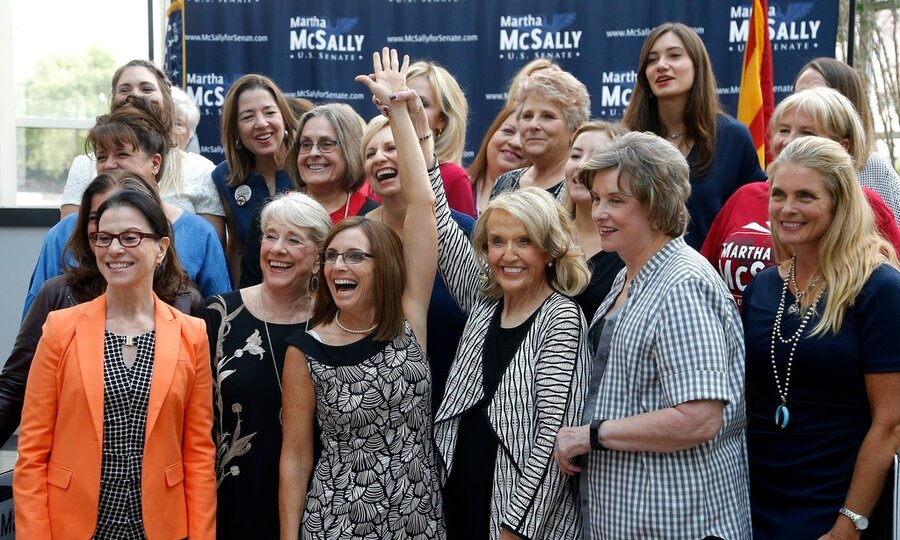The election’s ‘pink wave’ that is driving equality
Loading...
While political pundits debate the possibility of a “blue wave” – a Democratic Party landslide – in November’s elections, less has been said about a possible “pink wave” – the election of an unprecedented number of women to public office.
One recent survey showed that in as many as nine states, women could make up the majority of legislators, something no state has ever done. On average, women now occupy about one-fourth of the seats in the 50 state legislatures. In addition, a record 19 women have won major-party nominations for the US Senate while 11 women have been nominated for gubernatorial races and at least 185 women have won nominations in House races, according to the Center for American Women and Politics at Rutgers University.
Some women have garnered national attention. Twenty-something Alexandria Ocasio-Cortez gained attention when she upset a veteran incumbent congressman in a New York Democratic Party primary race. Less in the spotlight are others, such as Kristi Noem, a Republican expected to become the first woman governor of South Dakota.
And the list goes on. So many women are running for office that some have faced or are facing other women candidates in either their party primaries or in the general election.
Some observers see no news here. Voters should take a blind eye when it comes to the gender of a candidate, they argue. No “quota” by gender is wanted or needed. But for others the importance of gender balance is obvious. A few years back when Canadian Prime Minister Justin Trudeau was asked why he appointed an equal number of women and men to his cabinet, he replied: “Because it’s 2015.”
Other countries have made similar efforts to balance governing cabinets, the members of which aren’t elected but chosen by a chief executive. In Spain, 11 of the 17 government ministries are now headed by women. In France, President Emmanuel Macron’s cabinet is made up of 11 women and 11 men. (President Trump has six women in his cabinet or in cabinet-level positions out of 23 total positions, 26 percent. That figure is roughly comparable to the previous two US presidents, Barack Obama and George W. Bush, whose percentage of women cabinet members through their combined 16 years in office ranged between 19 and 35 percent.)
Women who win elections this fall will have to persuade not a single leader but the majority of voters that they are best suited to do the job.
Traditionally, women voters have largely ignored the sex of the candidate as a decisive issue in favor of party affiliation or other factors such as incumbency. In 2016 Hillary Clinton won only 54 percent of women’s votes; her male opponent, Mr. Trump, actually won 52 percent of white women voters.
But a recent survey shows younger women, ages 18 to 34, may be more ready to back candidates on the basis of gender. Nearly a third of these women say they’d prefer to vote for another woman, compared with 19 percent of all women. Another poll found 65 percent of women 18 to 44 say the United States would be better off if more women served in public office. Older women and men were much less likely to hold this view.
Would a greater percentage of women in office change the nation’s direction or priorities? That remains to be seen. But just as the election of President Obama assured racial minorities that they, too, were included in the political system, more women in office can assure the female half of the American public that the opportunity to serve in elected office is more open to them than ever.







